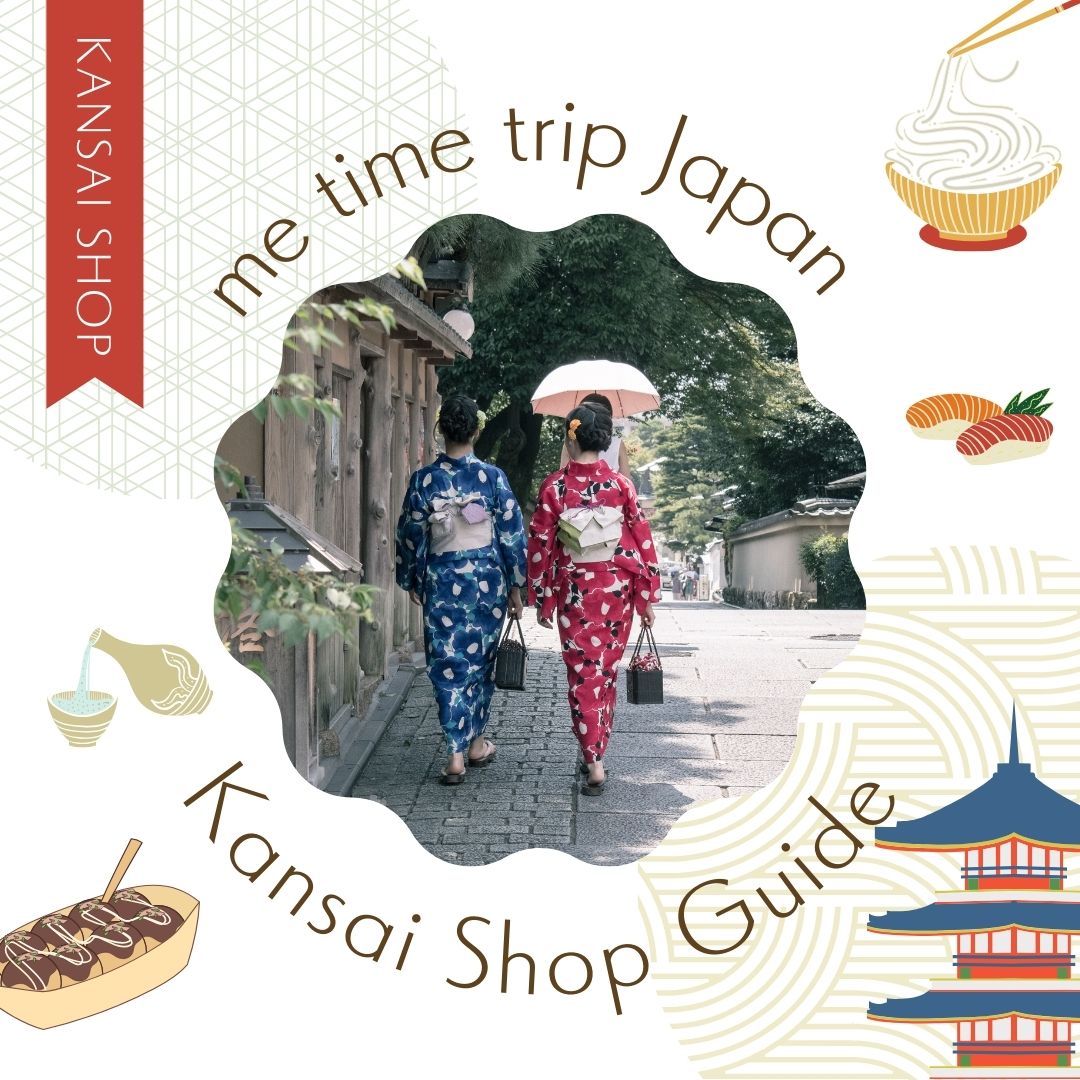When you’re in Japan, something I really recommend trying is udon or soba noodles. They’re both fantastic dishes. The broth, made from bonito and kelp, blended with soy sauce, combined with the noodles, is incredibly delicious. You can find udon shops, soba shops, or even places that offer both all over Japan. However, there’s one challenge – the menus are often extensive. There are so many options that even some Japanese people struggle to choose. So, for visitors from abroad, it might seem a bit complex.In this article, we’ll walk you through the various menu options you might find at udon and soba shops. Our goal is to help you enjoy your meal even if you don’t understand Japanese. Please note that there could be differences in the ingredients used for the same dish between the Kansai region, which includes Osaka and Kyoto, and Tokyo. This article focuses on explanations for Osaka and Kyoto, so please keep that in mind.
Kake Udon ・ Kake Soba
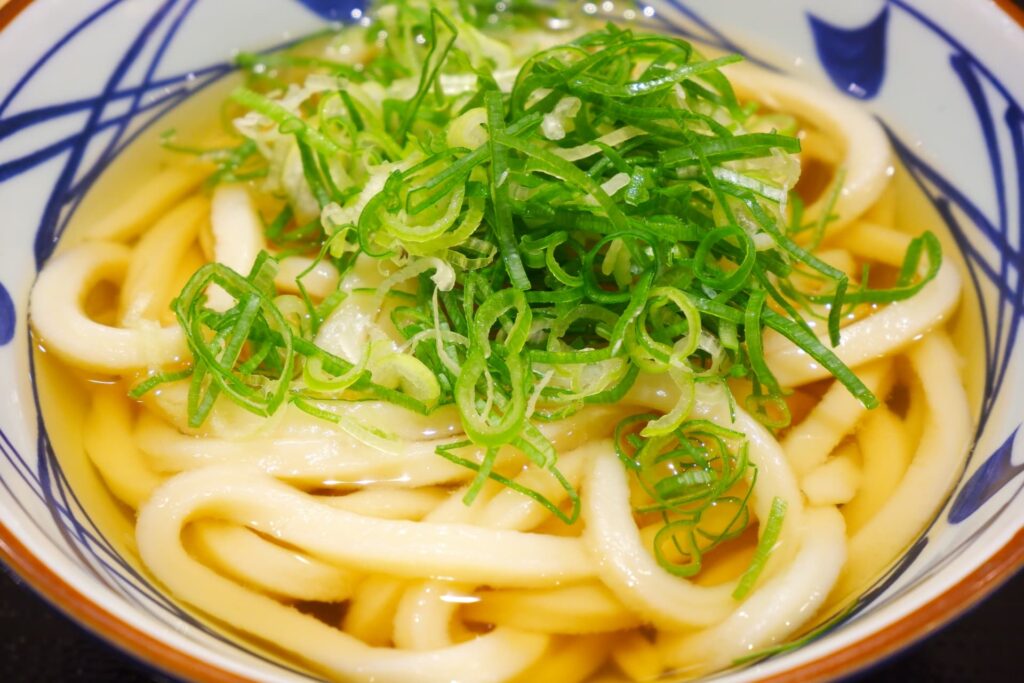
“Kake Udon” and “Kake Soba” refer to plain udon or soba noodles served with hot broth poured over them. They don’t come with toppings, although green onions (scallions) might be added.
Zaru Udon・Zaru Soba
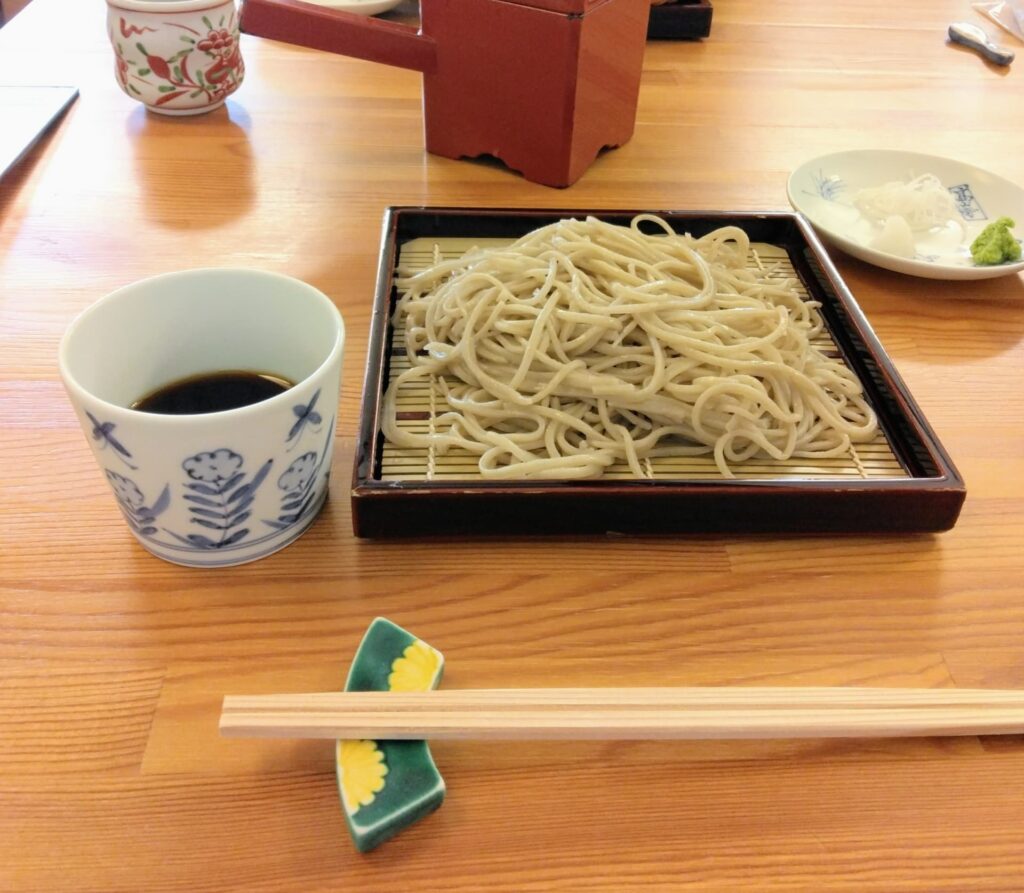
“Zaru Soba” and “Zaru Udon” are menu items featuring cold soba and udon noodles that are enjoyed with a cold dipping sauce. Unlike the warm versions of these noodles, which typically have a broth you can drink, the distinctive feature of “Zaru” dishes is dipping the noodles in a concentrated sauce before eating. These are particularly recommended on hot days.
Kizami Udon・Kizami Soba
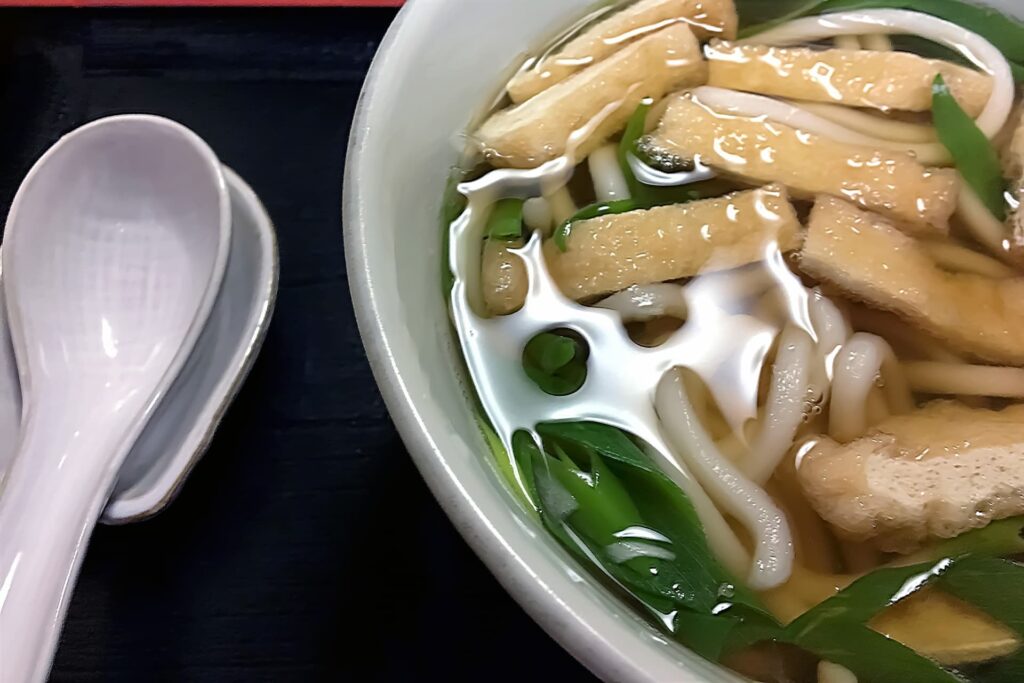
“Kizami” refers to thinly sliced tofu that has been deep-fried. In the context of udon or soba dishes, it’s used as a topping on the noodles.
Kitsune Udon・Tanuki Soba
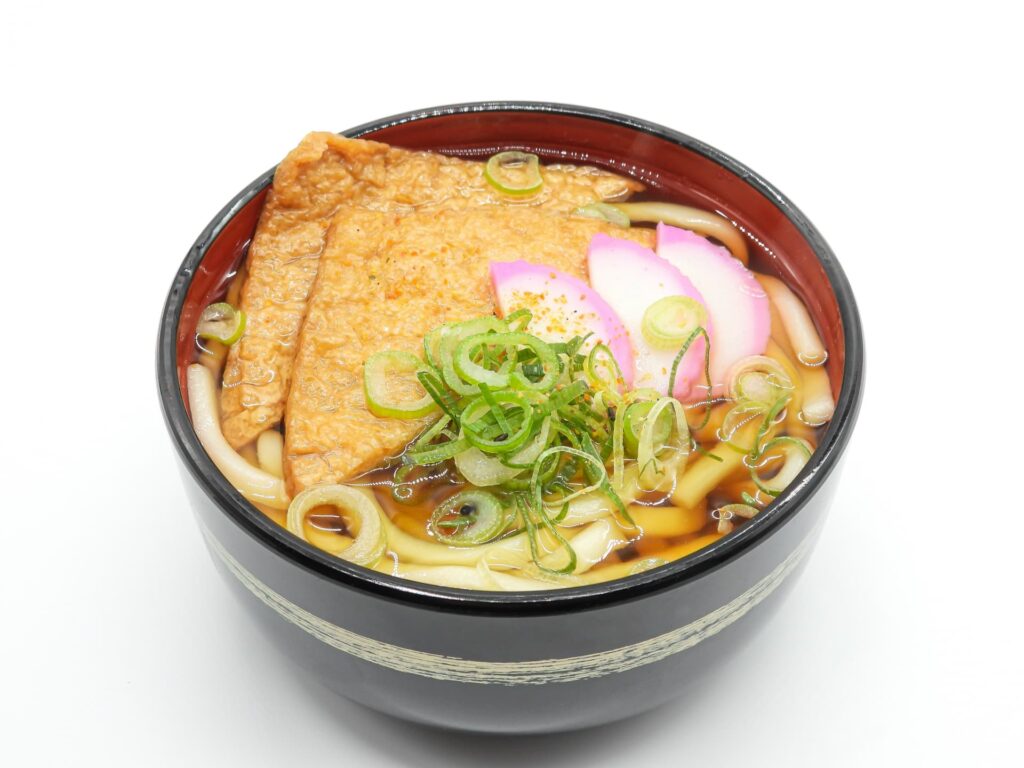
Thinly sliced tofu that has been deep-fried, sweetened, and flattened is referred to as “kitsune” (fox). It’s used as a topping on udon or soba noodles. However, please note that in Tokyo, “tanuki soba” refers to noodles topped with tempura crumbs instead of sweetened fried tofu, so careful attention is needed.
Tsukimi Udon・Tsukimi Soba

This is a dish of udon or soba noodles topped with a raw egg. Because the egg resembles the moon, it’s called “Tsukimi” (moon-viewing). You can choose to break the egg right away, or you can enjoy it by gently avoiding it while eating, letting it slightly set in the warmth of the broth before indulging. Both ways offer a delicious experience!
Kombu Udon・Kombu Soba
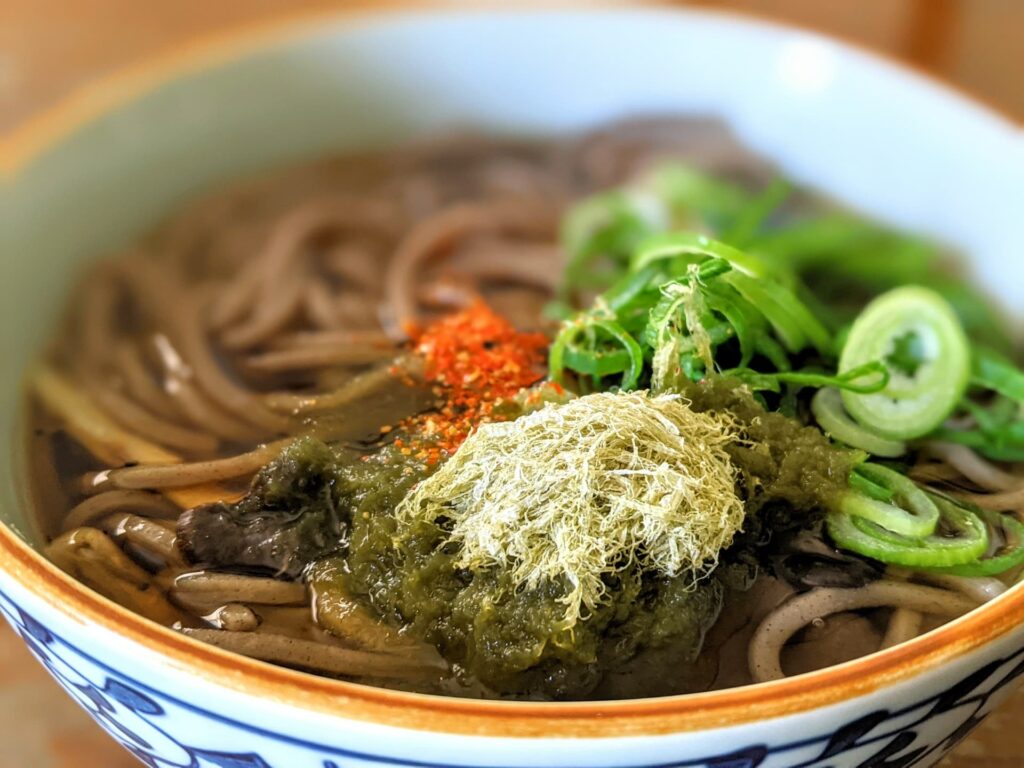
“Kombu Udon” and “Kombu Soba” are udon and soba dishes topped with a type of seaweed called kombu. Typically, it uses a slightly gooey variety of kombu known as “tororo kombu.” By the way, kombu is an ingredient often used to make the broth for udon and soba.
Wakame Udon・Wakame Soba
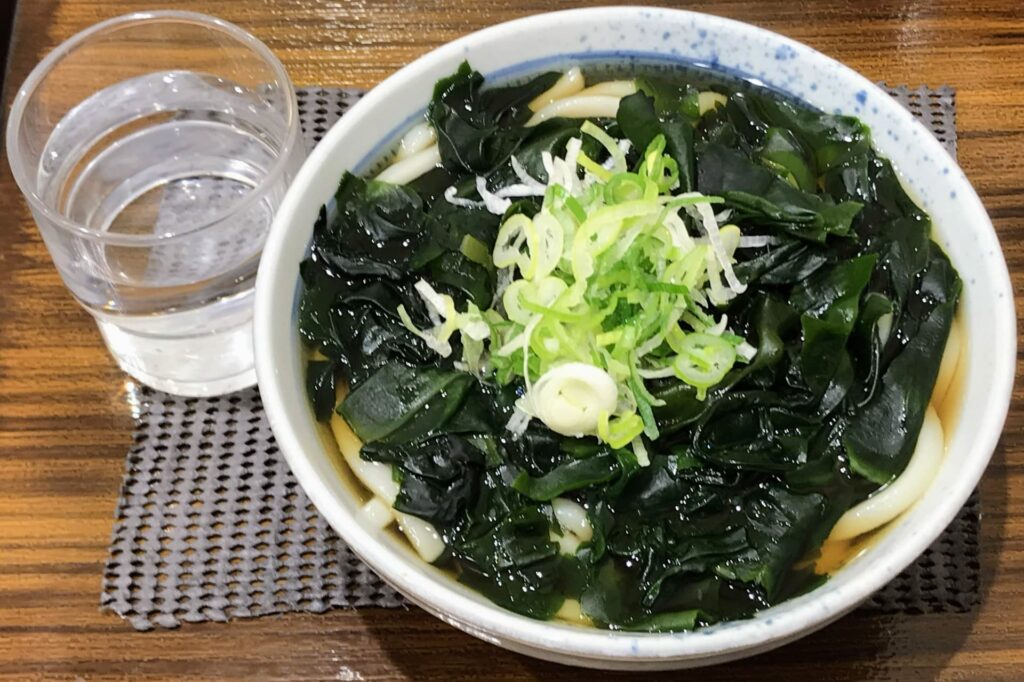
This is another dish where udon or soba noodles are topped with wakame seaweed, which is also a type of edible seaweed. Unlike tororo kombu, wakame has a crisp texture that adds a unique touch to the noodles.
Sansai Udon・Sansai Soba
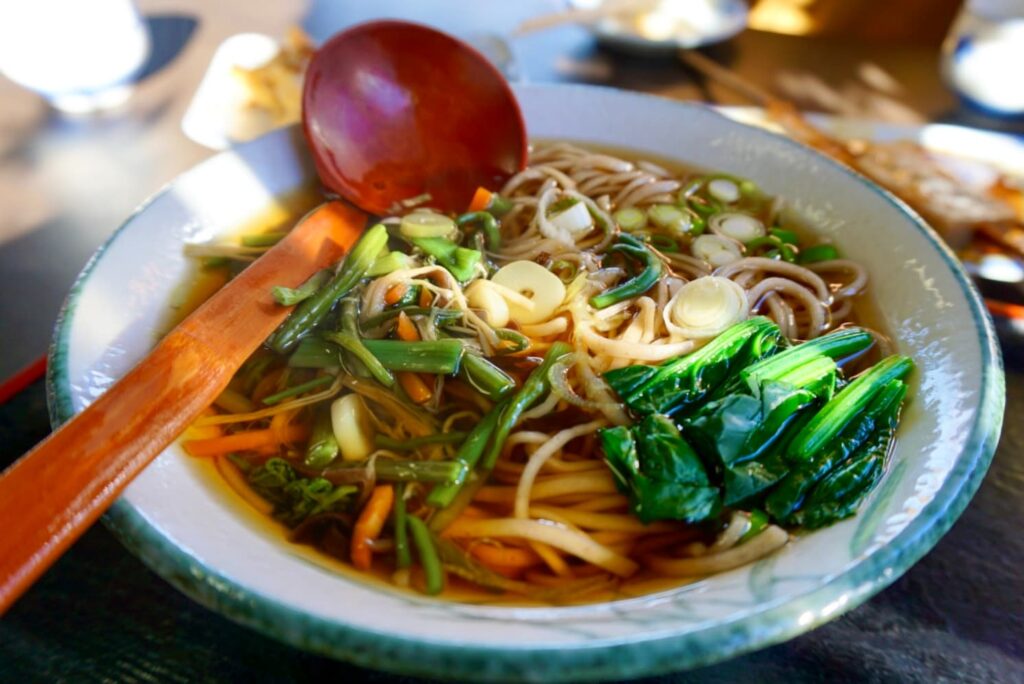
“Sansai Udon” and “Sansai Soba” are dishes that feature udon or soba noodles topped with wild mountain vegetables. These edible plants, known as “sansai,” are gathered from mountains and other natural areas. The specific types of mountain vegetables used can vary between different establishments, but common choices include warabi (bracken fern), zenmai (royal fern), udo (Japanese spikenard), and takenoko (bamboo shoots).
Ankake Udon・Ankake Soba
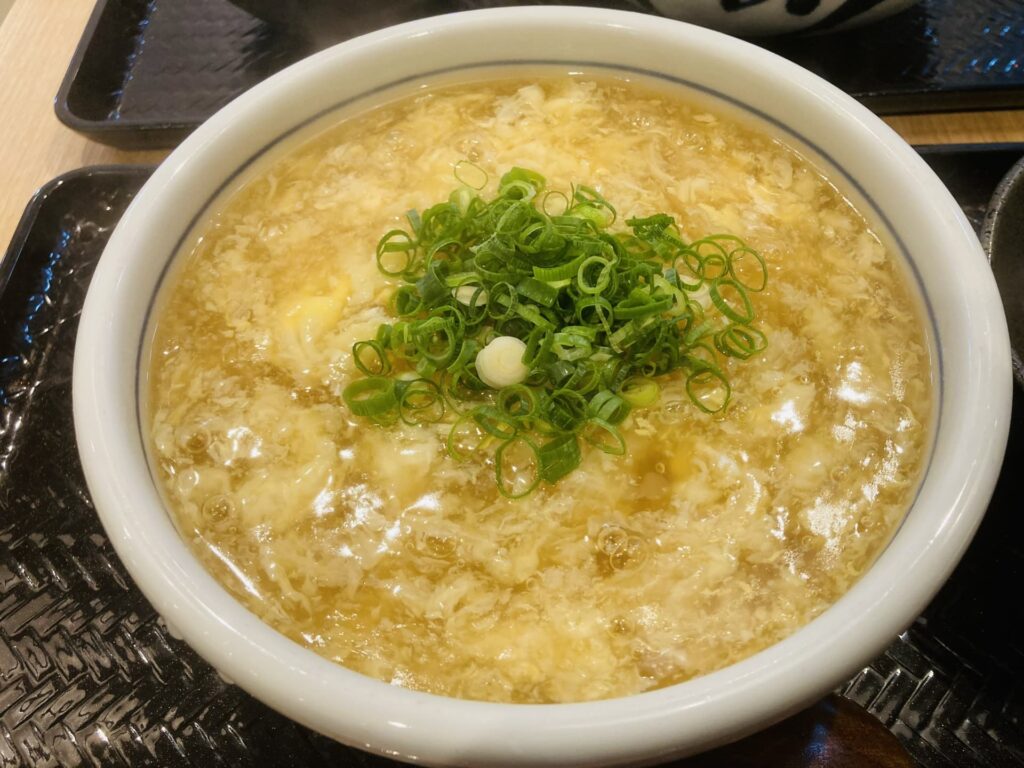
In Japan, “ankake” refers to a sauce thickened with katakuriko (potato starch). “Ankake Udon” and “Ankake Soba” are dishes where the broth for udon or soba is turned into a thickened sauce. Depending on the place, these dishes often come with a standard topping of beaten egg as well.
Tempura Udon・Tempura Soba
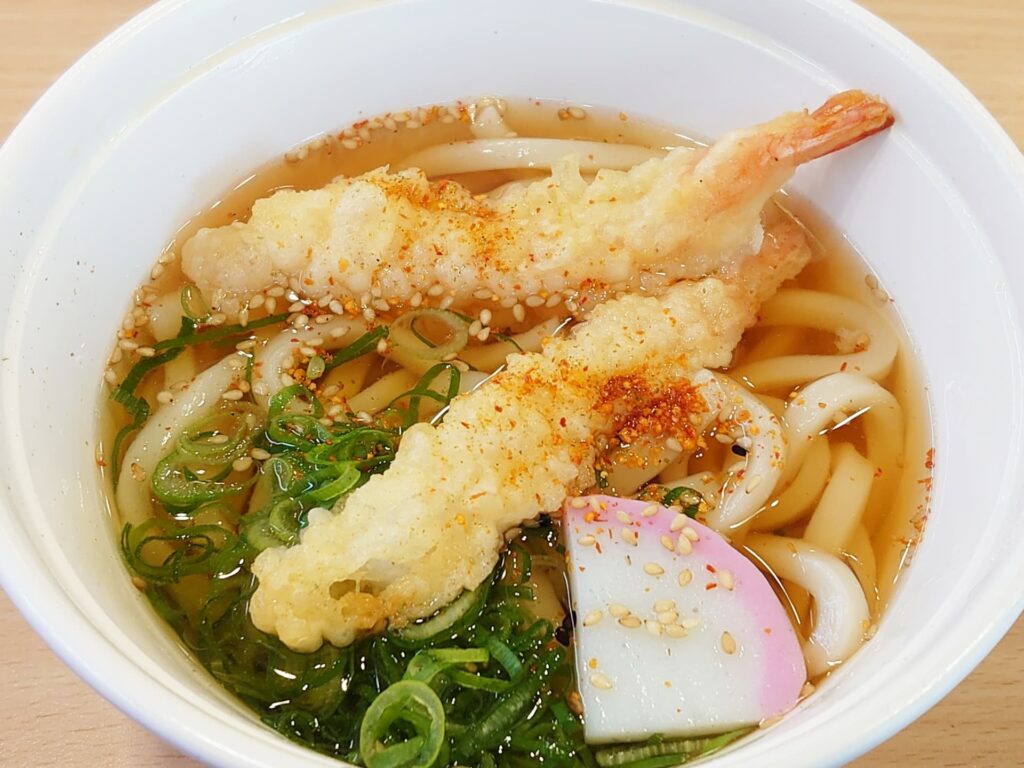
“Tempura Udon” and “Tempura Soba” are dishes where udon or soba noodles come with a topping of tempura. The tempura topping usually consists of shrimp, but variations can include ingredients like fish cake and seaweed, depending on the restaurant.
Tempura Zaru Udon・Tempura Zaru Soba
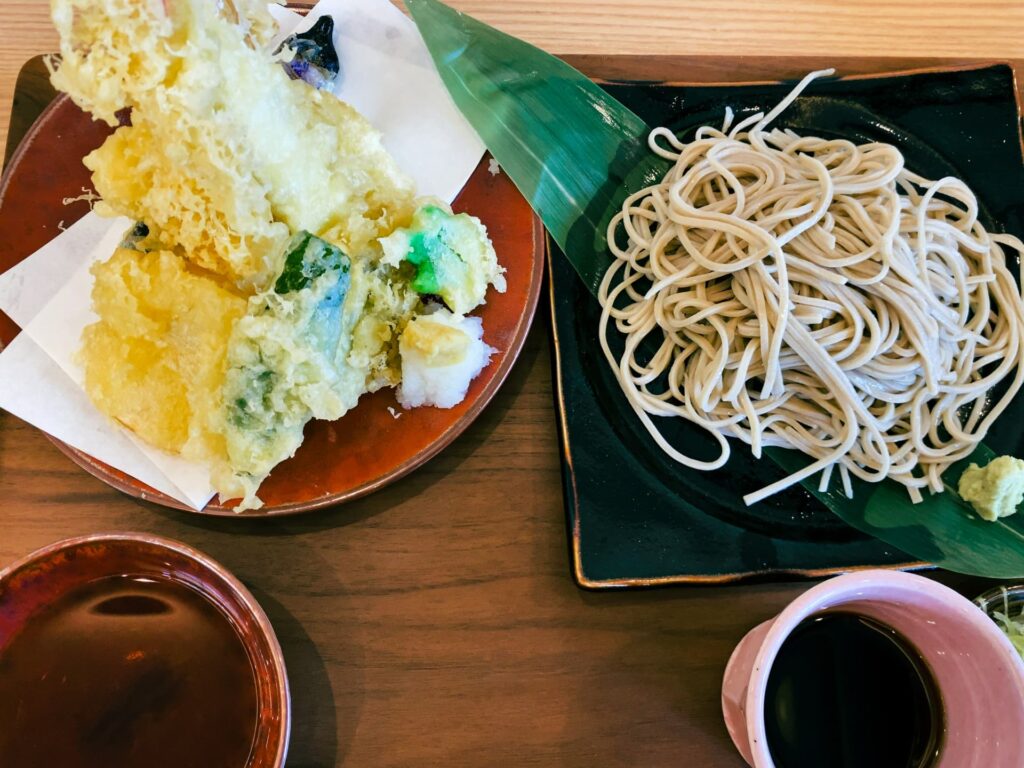
The dish I introduced at the beginning, “Zaru Udon” or “Zaru Soba,” now comes with a side of tempura. This version features cold udon or soba noodles served on a bamboo tray (“zaru”) along with a selection of tempura. Typically, this tempura assortment is more elaborate than what you’d find with warm udon or soba dishes, often including tempura shrimp, eggplant, pumpkin, fish cake, and lotus root, among others.
Kakiage Udon・Kakiage Soba.
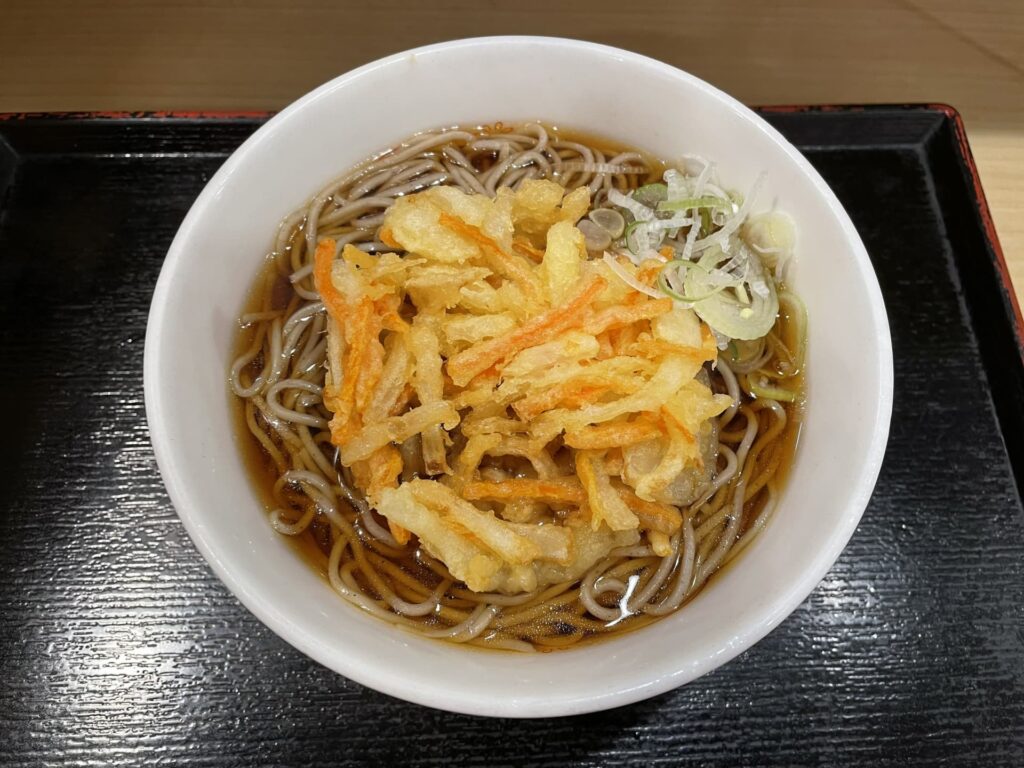
“Kakiage Udon” and “Kakiage Soba” are dishes where the topping is “kakiage,” a type of tempura made by mixing and frying small pieces of seafood and vegetables.
Niku Udon・Niku Soba
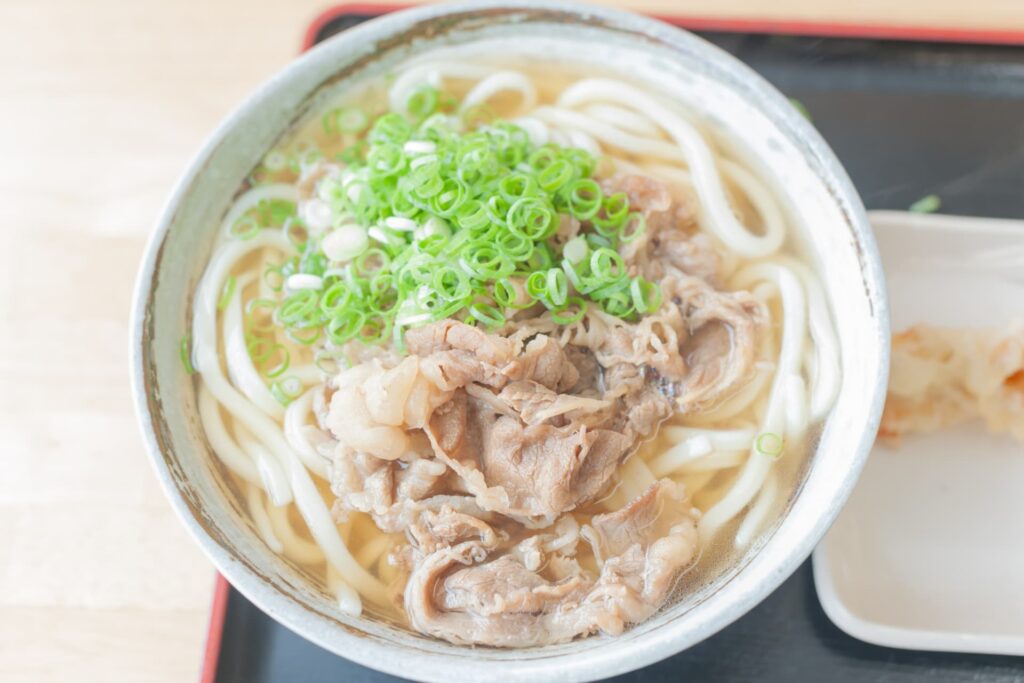
“Beef Udon” and “Beef Soba” are dishes where sweet and savory simmered beef is used as a topping on udon or soba noodles. The rich broth released from the beef combines with the original broth to create a flavorful dish. Just a note, in the Kansai region (Osaka, Kyoto, etc.), beef is commonly used, while in the Kanto region (Tokyo, etc.), pork might be used as well.
Kamo Nanban Udon・Kamo Nanban Soba
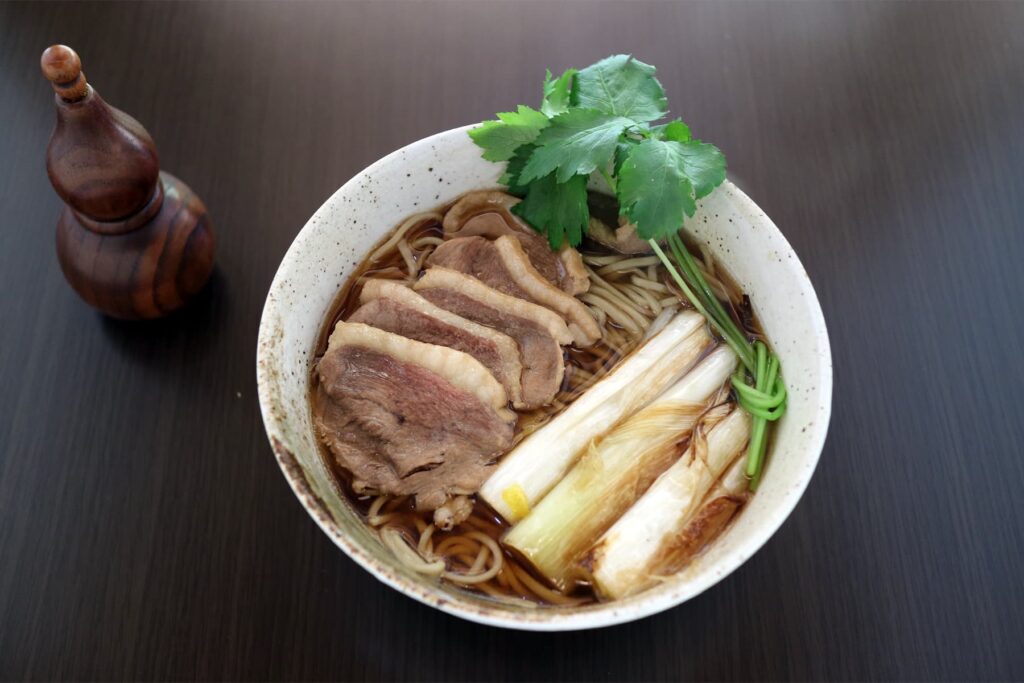
“Duck and Thick-Cut Green Onion Udon” or “Duck and Thick-Cut Green Onion Soba” is a dish featuring udon or soba noodles with tender slices of duck meat and thick-cut green onions. In the case of “Kamo Nanban,” the broth might have a slightly stronger sweet and savory flavor compared to other udon or soba dishes.
Chicken Nanban Udon・Chicken Nanban Soba
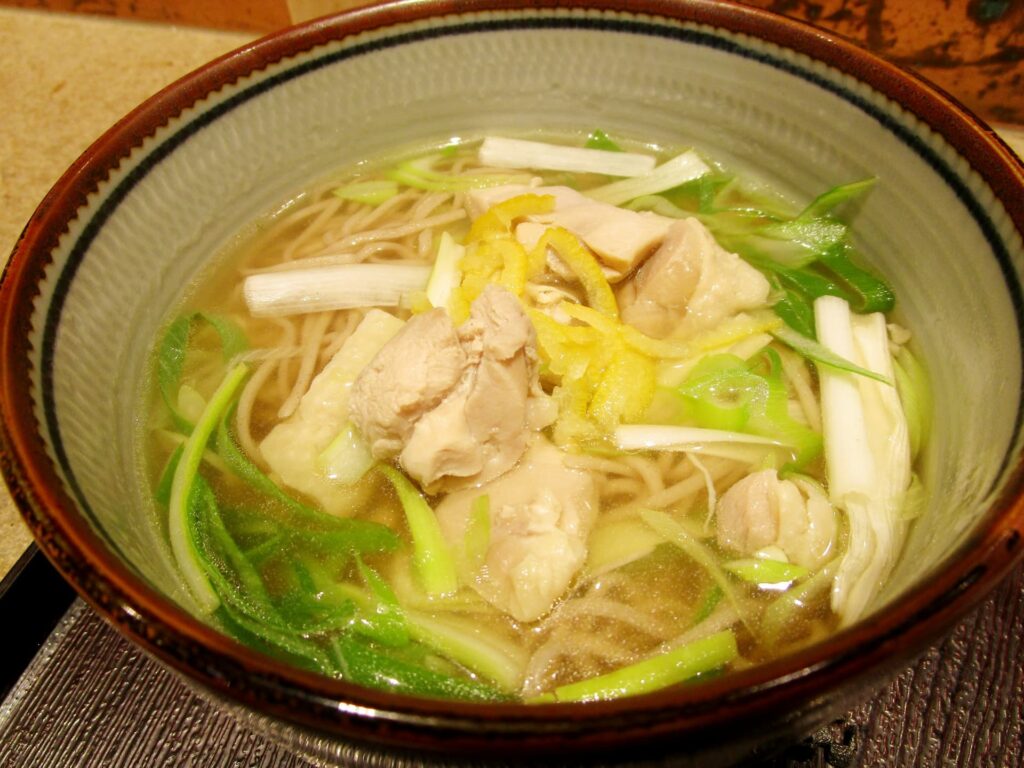
“Chicken and Thick-Cut Green Onion Udon” or “Chicken and Thick-Cut Green Onion Soba” is a dish that combines udon or soba noodles with tender pieces of chicken and thick-cut green onions. The natural umami from the chicken seeps into the broth, creating a gentle and comforting flavor.
Kasu Udon
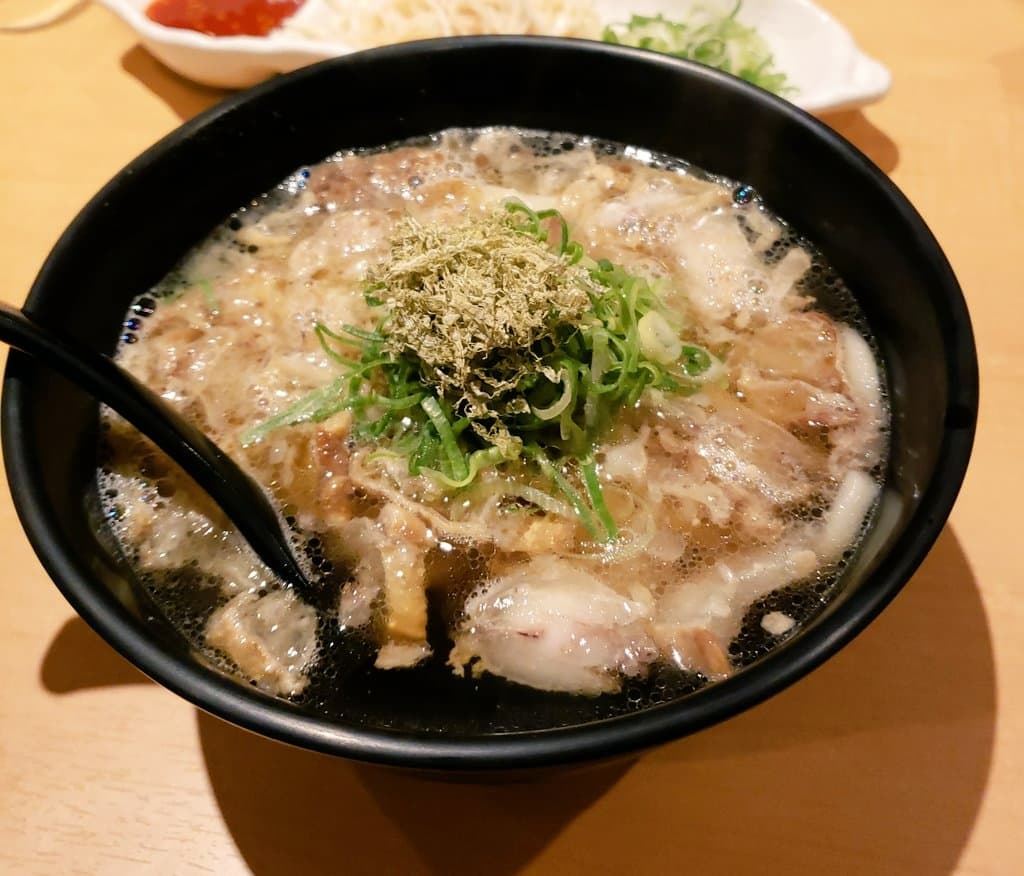
“Kasu Udon” is a dish where udon noodles are topped with fried beef offal (intestines) that have been cooked at low temperatures. This dish is commonly enjoyed with udon noodles, and “Kasu Soba” is not as common due to this preference. It’s a specialty of Osaka and often not found in other regions.
Nishin Soba
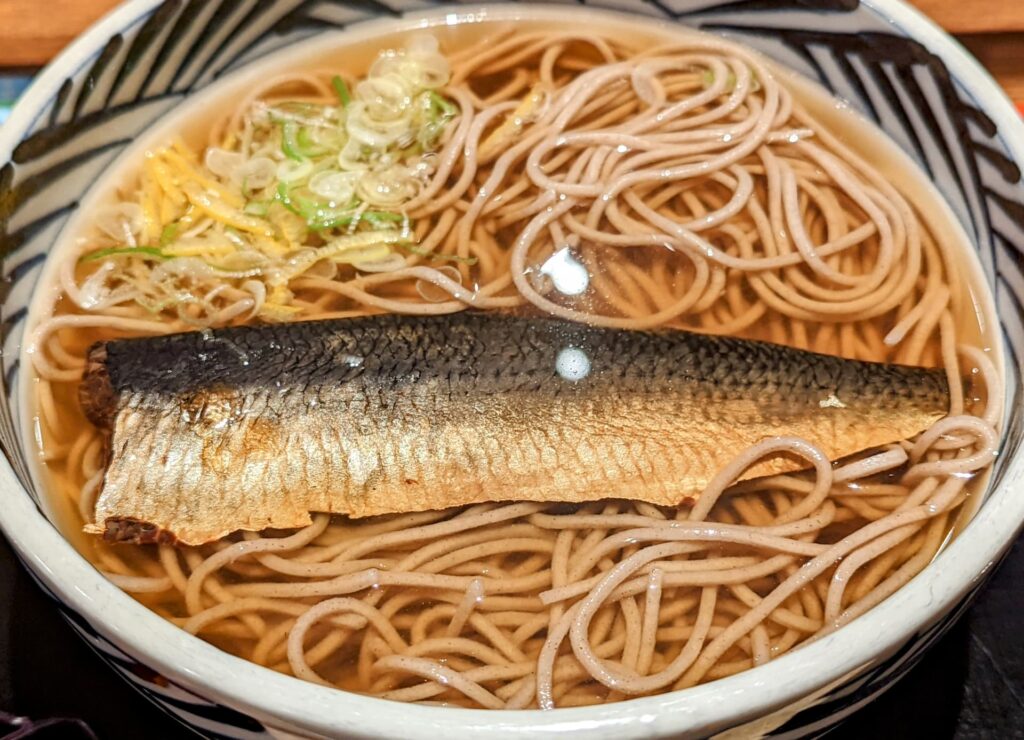
“Nishin Soba” is a dish where soba noodles are topped with sweet and savory simmered herring fish. This combination is often enjoyed with soba noodles. While it originated in Kyoto, this dish is now enjoyed across the country.


